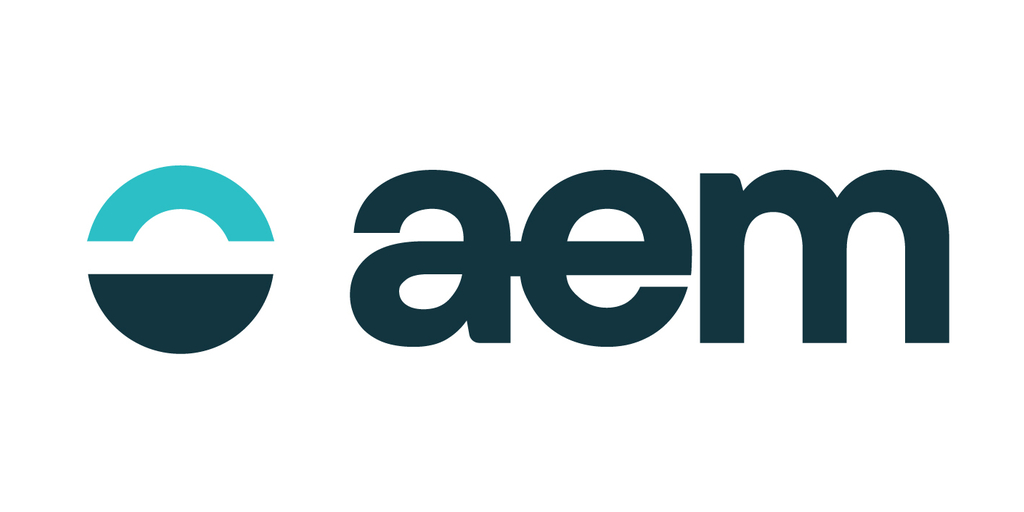Support CleanTechnica’s work through a Substack subscription or on Stripe.
The streets of Guangzhou are dominated by Chinese branded cars with green license plates (signifying that they are NEVs, or new energy vehicles). The smaller number of blue plates (ICE) are largely older American, Japanese, and German brands, with a significant share coming from Volkswagen Group’s Audi. According to several industry peers in China, Audi has struggled to build EV sales in the fiercely competitive market. The major Chinese brands in the premium segment all offer powerful, high-quality EVs loaded with technology and features. However, Audi deepened collaboration with SAIC to develop the new AUDI sub-brand (all caps, without the four-ring logo) to meet the challenge, and the vehicle was heavily promoted at the show.
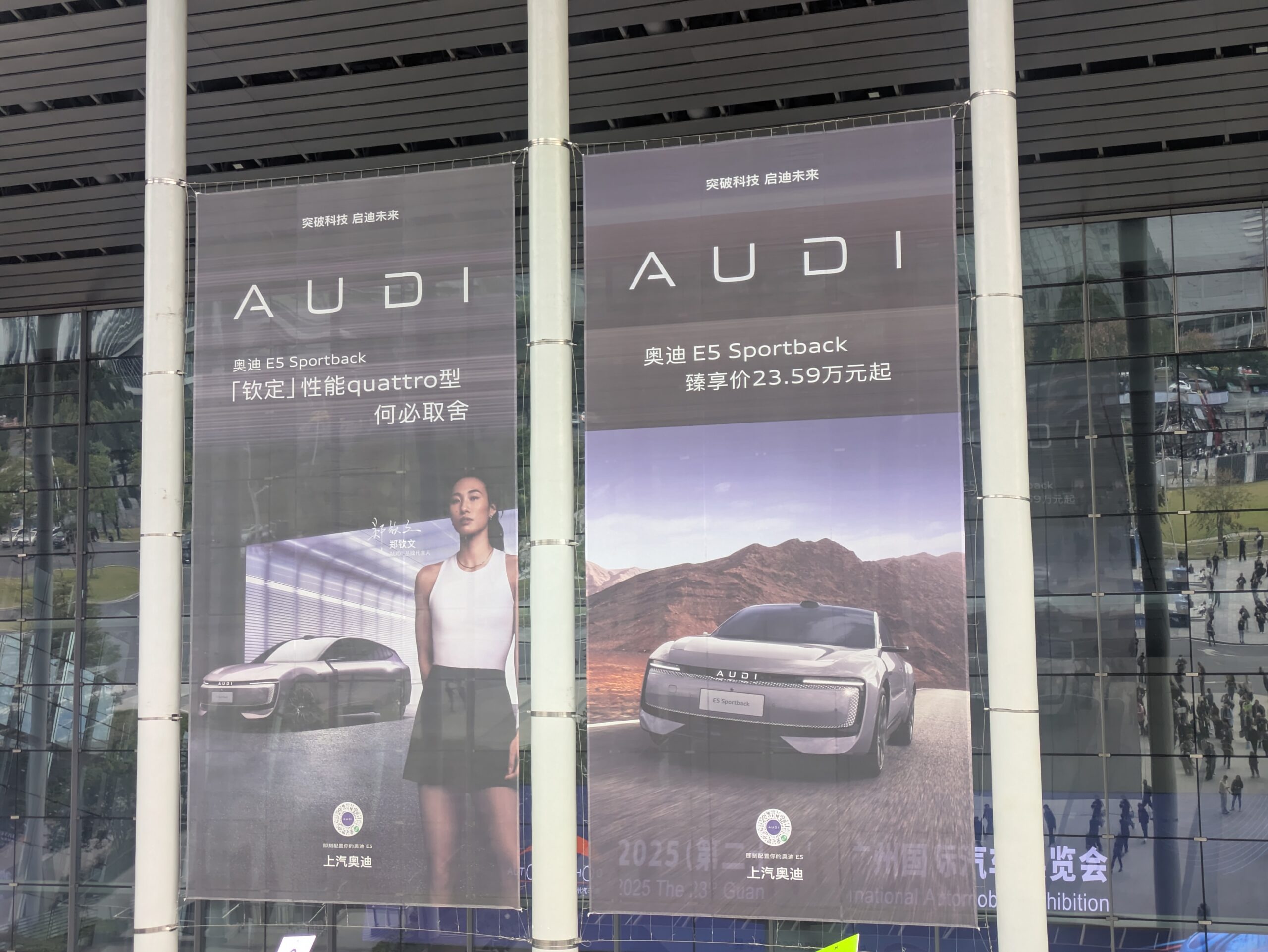
While prices in China are different from global markets, the 235,900 RMB ($33,000) to 319,900 RMB ($45,000) price range mirrors the older, less-exciting Model 3 in China. The AUDI offers 579 kW (776 hp), achieving 0–100 km/h in 3.4s in the top spec Quattro model. Range is up to 770 km (479 miles) under CLTC. Overall, at 4,881 mm (192.2 in) long, it is only slightly shorter than the more expensive but less powerful, less tech-filled, and less interesting A6/S6 Sportback e-tron sold in other markets.
In addition, the AUDI sub-brand also premiered the E SUV concept. This 5-meter-long premium SUV continues the AUDI design language and comes with 500 kW of power delivered through four wheels. The range is estimated to be more than 700 km (435 miles) from the 109 kWh battery on 800-volt architecture, capable of recharging 320 km (200 miles) of range in 10 minutes. If the final execution is as impressive as the E5, I anticipate this should also help energize AUDI EV sales.
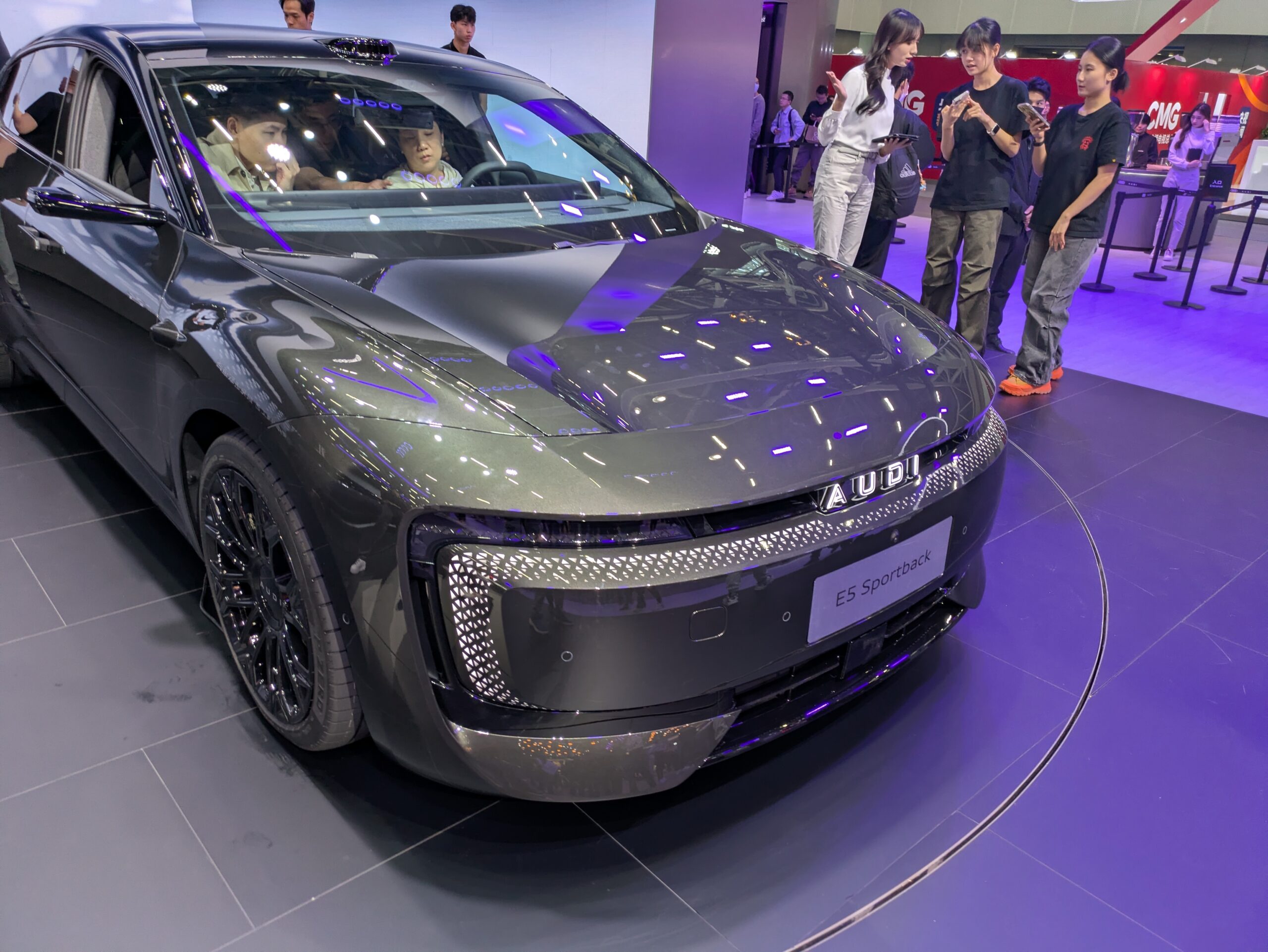
E5 Sportback in Person
It is one thing to see these vehicles in photos, but another to see them in real life. Overall, the E5 Sportback looks like an Audi from the future. It is sleek and modern, ditching the unnecessary vestigial grille that adorns many EVs. The new face and profile are different than many of their other models but still reads as Audi. It reminds me of the rally cars of my youth, when Quattro seemed like magic. The profile is part wagon and part fastback, with a long wheelbase. The design also directs air around the front of the vehicle to improve aerodynamics, in spite of the short overhangs.
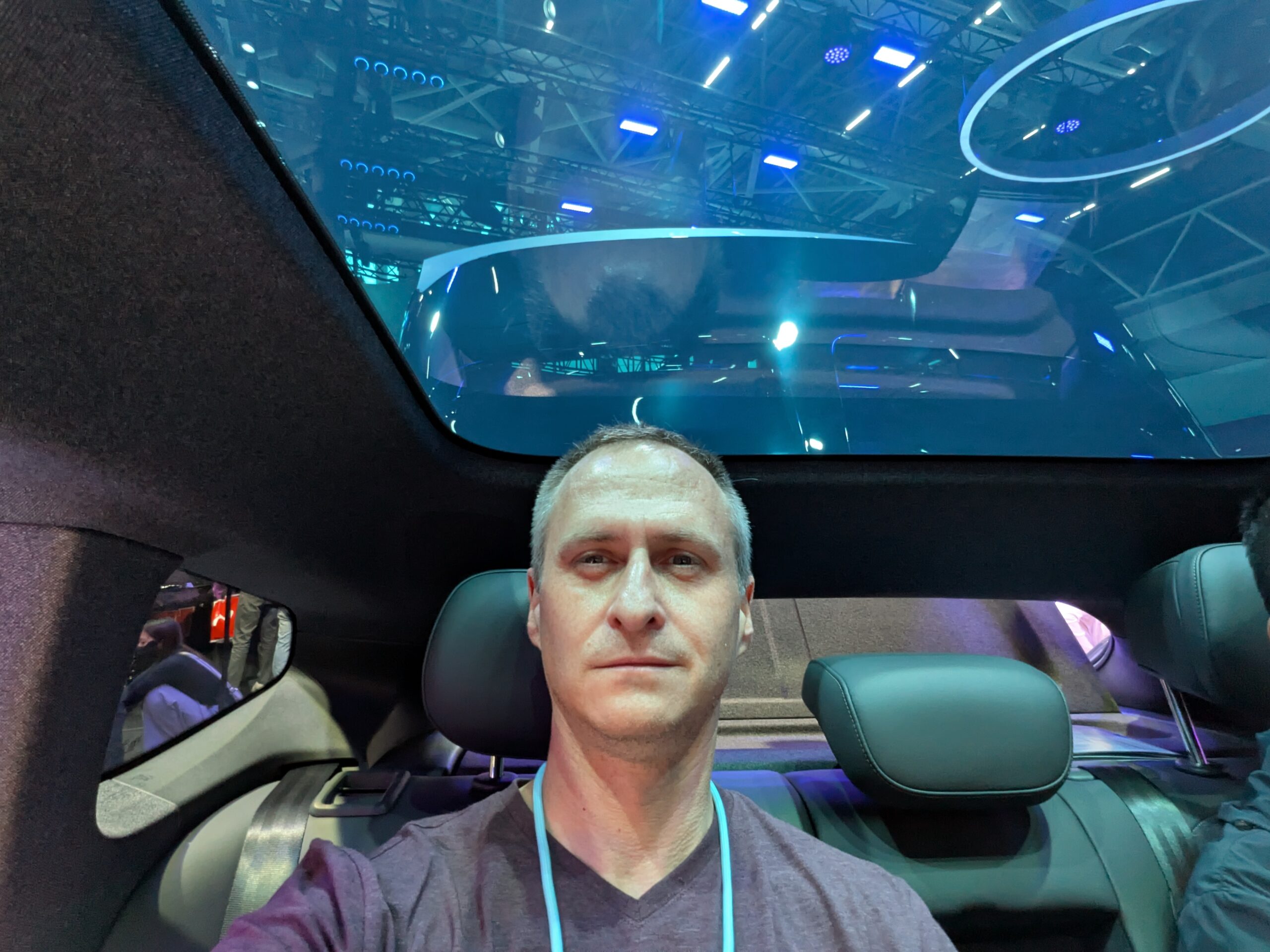
Despite the sleek profile, the interior is surprisingly spacious. I was able to sit in the back without hitting my head, unlike many cars at the show.
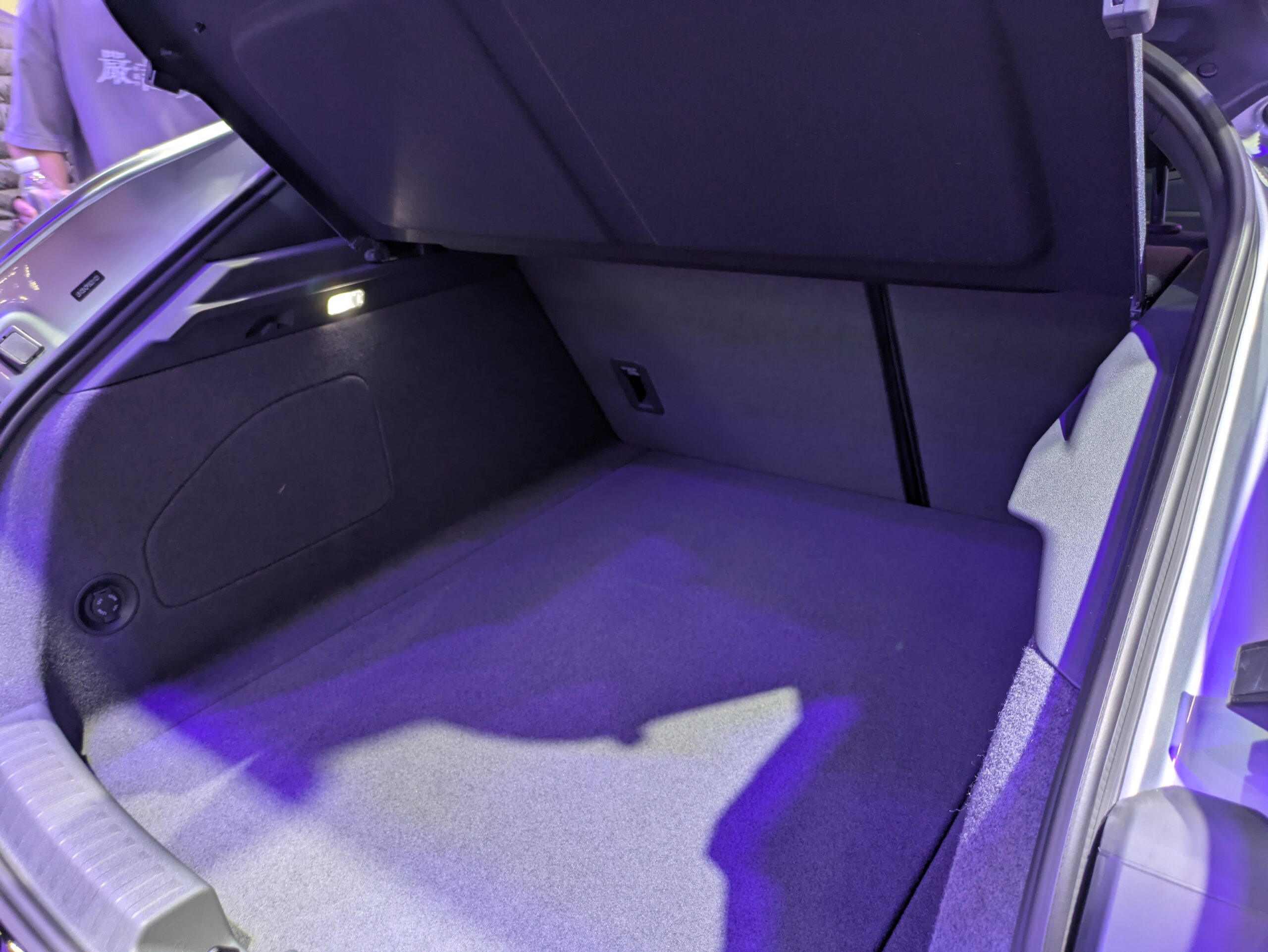
Legroom was plentiful, as was cargo room in the back.
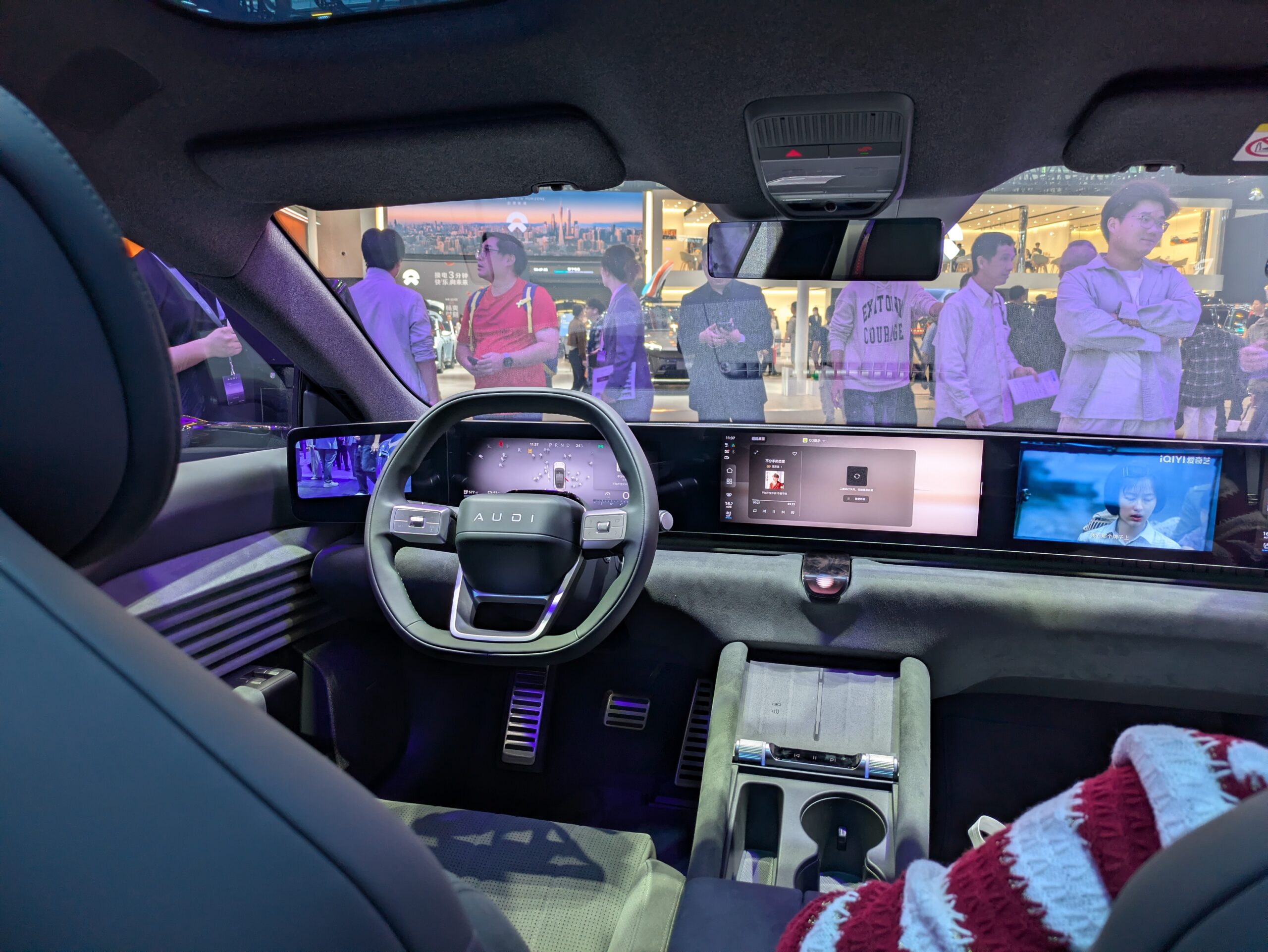
The design integrates fabric, leatherette, microfiber, and wood to create an interior that is both interesting and feels premium. It’s clearly differentiated from the pleather and glossy black plastic interiors of some competitors. While screens proliferate, they are more integrated than the tablet stuck on the dash design of many cars. A heads-up display also lets drivers keep their eyes on the road, while physical controls for the most used applications mean they don’t have to take their eyes off of it.
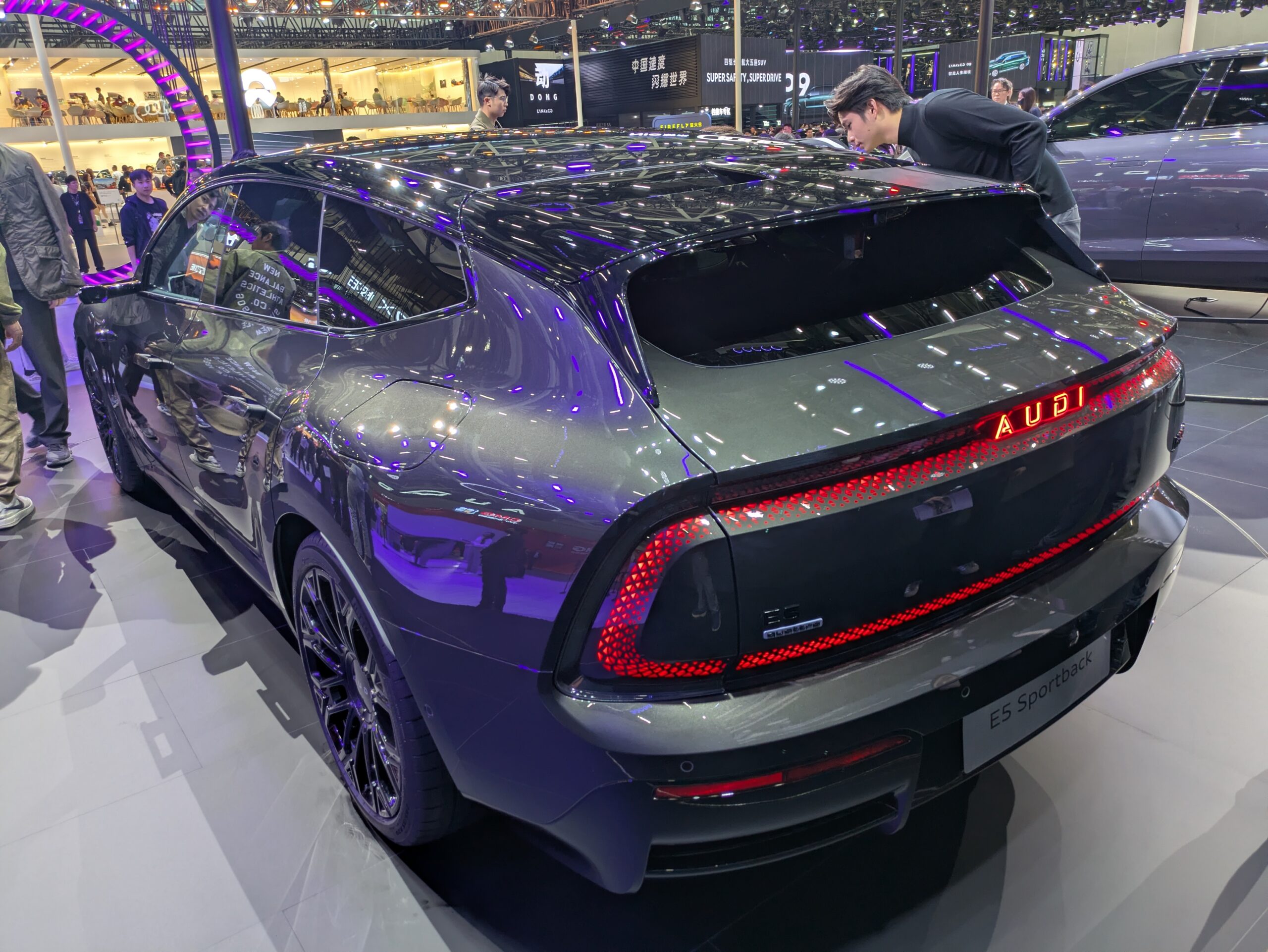
As impressive as the E5 Sportback is, it is only being offered in China for now. However, this isn’t Volkswagen Group’s only collaboration in China. Those collaborations could be essential to Volkswagen’s continued sales in many critical markets.
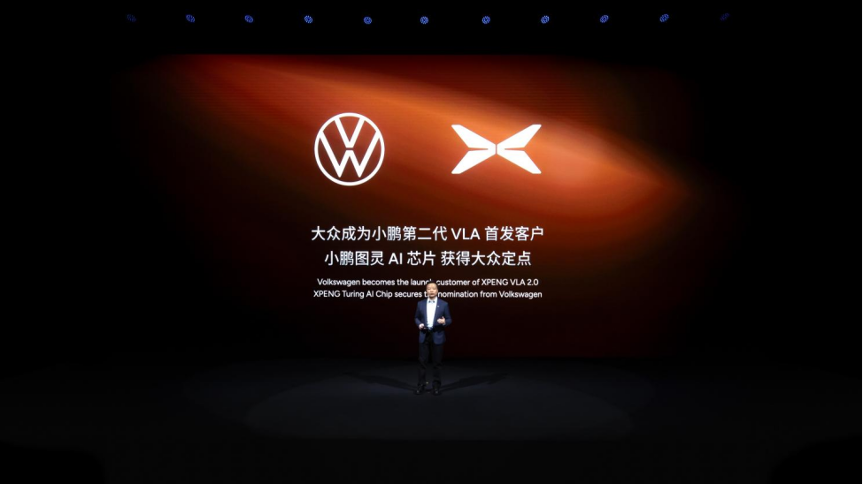
Volkswagen Group has a Window of Opportunity
In speaking with German media at the event, they mentioned that Volkswagen Group, including Audi, has a window of opportunity in the EV transition. Brand loyalty and loyalty to dealers have many people sticking with their brands. MEB platform vehicles are popular in Europe and are not bad cars, but they are by no means the best globally. For many German car buyers, who are a couple of decades older on average than those in China, VW EVs are better than the ICE vehicles they replace and offer more advanced technology compared to their previous cars. However, If Volkswagen Group does not step up their game, customers will eventually realize that they can do better, and the window of opportunity will close.
I could already see it happening in my first experience with XPENG in 2023. XPENG (who hosted me in Guangzhou) had a showroom in Copenhagen across the street from a Volkswagen EV showroom. Going from one to the other, it was clear that XPENG was already ahead in design, technology, interior materials, and fit and finish. That gap has only widened in the past two years, as Chinese brands keep raising the bar.
To Volkswagen’s credit, it is now rising with the bar through collaboration. XPENG now has a deepening technology partnership with VW, and we can expect many of the advancements that I experienced in XPENG vehicles to appear in Volkswagen Group vehicles soon. This technology partnership includes XPENG’s AI-enabled XNGP ADAS system. In my experience, this system is more capable than FSD and impressed in China’s complicated driving situations.

XPENG will also provide the platform for the ID.UNYX 08, previewed by the ID EVO Concept. The large, sleek crossover will come with 308 to 500 horsepower, featuring an LFP battery and 800V platform, according to reports. Exact capacity and pricing are currently unknown, but range could be up to 700 km. We should know more soon, as the vehicle is anticipated to officially launch in the next few months.
Volkswagen Group vehicles are poised to become far more advanced. Their technology could leap forward to compete for the front of the pack. Volkswagen is increasingly embracing collaboration with its design and manufacturing partners. From what I have seen, Volkswagen Group brands have the potential to rise above many other legacy automakers in the transition to electric vehicles.
The Power of Collaboration
While listening to the presentations and reading through the sales materials for many Chinese brands, virtually all of them tout European designers. However, the designs now seem far more advanced than what we see from the home countries of those designers. They are more like the concept cars that get us excited than the bland production models that end up making it to market. This brings up a number of questions: Do Chinese companies trust their designers more? Are the designs elevated to meet the demands of the tech-focused market? Does the competition push designers to be more creative? Do the designs get less diluted due to corporate structure? Does the product development power mean that designs are less constrained by engineering practicalities?
Regardless of the reasons behind it, the designs coming out of European designers and European companies in China are now more advanced than they are in their home markets. The collaboration is clearly stronger than either China or Europe trying to do it on their own.
Even the most skilled and talented cannot be the best at everything, making collaboration important to success. Clean technology is accelerating in China, even if some in the West are trying to stop it. EVs are now a better product than ICE vehicles, and the gap is widening. Political roadblocks can slow that transition in some places, but they will not stop it. Rather than feeling threatened, we have an opportunity to collaborate and accomplish more than any single company or country could do on its own. Those who embrace the collaboration, despite the political obstacles, are poised to end up ahead in the EV transition.
Sign up for CleanTechnica’s Weekly Substack for Zach and Scott’s in-depth analyses and high level summaries, sign up for our daily newsletter, and follow us on Google News!
Have a tip for CleanTechnica? Want to advertise? Want to suggest a guest for our CleanTech Talk podcast? Contact us here.
Sign up for our daily newsletter for 15 new cleantech stories a day. Or sign up for our weekly one on top stories of the week if daily is too frequent.
CleanTechnica uses affiliate links. See our policy here.
CleanTechnica’s Comment Policy


